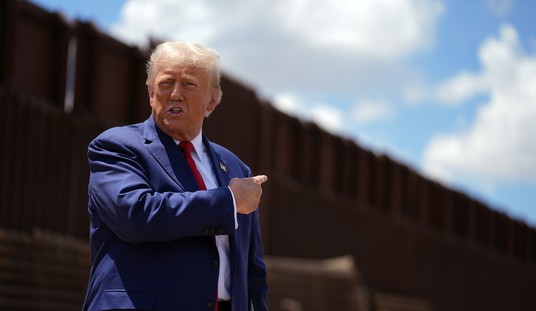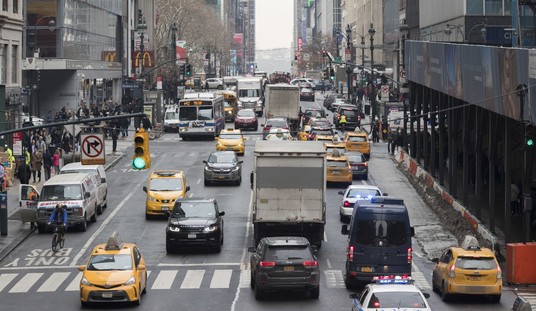In fairness, the long hours he’s devoting to promoting incoherent theories of election-rigging leaves him very little time to focus on something like the national COVID vaccination program.
When he says that getting people vaccinated is the states’ job, not the federal government’s, he’s half right. No one expects him to deploy federal agents to staff vaccination centers. Plus, he already delivered blockbuster results with Operation Warp Speed by distributing a highly effective vaccine before the end of the year. At some point this is out of his hands.
But it’s baffling that he and his staff didn’t press harder to help states build an infrastructure to administer the vaccine as we got closer to V-Day with Pfizer and Moderna. Testing was a shambles back in March but at least then the feds had the excuse of the virus being brand new to help explain why they were caught flat-footed. (“I don’t take responsibility at all,” Trump famously said at the time about the dearth of COVID tests.) This time, they knew months in advance that the vaccine might arrive in December and that we were apt to be stuck in a ferocious second wave of the pandemic when it did. Efficient vaccination on a mass scale would be a matter of life and death for thousands.
He doesn’t take responsibility at all:
https://twitter.com/realDonaldTrump/status/1344051613216993281
https://twitter.com/realDonaldTrump/status/1344262826261676032
They did put up a little money to get the states going on this — emphasis on “a little.”
“It had to go this way,” Paul Offit, a professor of pediatrics at Children’s Hospital of Philadelphia, told STAT. “We had to trip and fall and stumble and figure this out.”…
The logistics of the rollout have been largely left up to states to navigate. States and local public health officials have warned for months that they would need more than $8 billion in additional funding to stand up the infrastructure needed to administer vaccines. The Trump administration instead provided states $340 million in funding to prepare for vaccinations. Congressional lawmakers also balked for months at appropriating additional funding for vaccine distribution, although the coronavirus stimulus package signed by President Trump on Sunday included $8 billion in funding for that effort.
“We’re trying to do everything on a shoestring, when really we need vast amounts of money invested. It’s been phenomenal, the needs that should have been taken care of six months ago, so we’re not continuing to build the system as we’re rolling it out,” said Ann Lewandowski of the Rural Wisconsin Health Cooperative.
It’s the public-health equivalent of the great $2,000-check debate. At any point in the last six months POTUS could have done what he’s doing right now, putting pressure on Congress to act urgently by taking his case to the public. “We need $2,000 payments and we need them now. Any member of Congress, including Republicans, who resists is putting lives in danger.” If he had said that in September, he might be preparing for his second inauguration today and millions of people on the edge of destitution would be somewhat more secure. Instead he waited until it was too late, inexplicably. Same goes for vaccine infrastructure. He could have grabbed deficit hawks like Ron Johnson by the lapels months ago and said, “The Trump vaccine is coming. I want states ready to roll on day one. I don’t care where you get the money, just get it.” Why didn’t he?
Officials from Operation Warp Speed and the CDC are trying to calm the public today about the pace of vaccinations. “We are really doing well, in my opinion, in distribution,” said Gen. Gus Perna to reporters, citing the fact that 14 million doses have already gone out the door. “I really expect those [vaccination] numbers are going to increase fast next week,” CDC immunologist Nancy Messonier added. Let’s hope so, as we’re racing an opponent here who’s gaining speed as the race goes on.
The first person in the U.S. known to be infected with a new and apparently more contagious [British] variant of the coronavirus was identified Wednesday as a Colorado National Guardsman who had been sent to help out at a nursing home struggling with an outbreak. And health officials said a second Guard member may have it, too…
The variant is probably still rare in the U.S., but the Colorado patient’s lack of travel history means it is spreading, perhaps seeded by visitors from Britain in November or December, said scientist Trevor Bedford, who studies the spread of COVID-19 at the Fred Hutchinson Cancer Research Center in Seattle.
“Now I’m worried there will be another spring wave due to the variant,” Bedford said. “It’s a race with the vaccine, but now the virus has just gotten a little bit faster.”
Interestingly, the Guardsman may not have picked up the British variant of the virus at the nursing home. Of the samples taken from residents and staff at that facility, tests so far show that no one was infected with that particular strain. Hmmmm.
Scientists still haven’t confirmed yet that the British virus is more easily transmitted than the version that’s been ravaging the U.S. for the past nine months, but Bedford’s been looking at the data gathered so far and thinks it’s very likely.
For point 1 (increase in frequency) we have pretty much the same data as of a week ago, where we see increasing frequency of variant over wildtype across the UK. This can be readily seen in this analysis by @TWenseleers. 3/10https://t.co/mGGxtdqRR0 pic.twitter.com/lWu5kTDWgo
— Trevor Bedford (@trvrb) December 29, 2020
This translates to an estimated 10 to 100-fold increase in average viral load of variant cases. This gives a hypothesized mechanism for increased transmissibility, ie individuals infected by the variant will on average expel more virus and be consequently more infectious. 8/10
— Trevor Bedford (@trvrb) December 29, 2020
It makes sense that a higher viral load would make for a more transmissible strain but it’s curious that the new strain isn’t also more deadly. One still unproven hypothesis for why some people get severe cases of COVID and others don’t is that severe cases involve higher viral loads. The more viral particles are in your system to start with, the more rapidly it spreads throughout the body before your immune system kicks into gear, or so the theory goes. But if the British strain involves a greater amount of virus, why isn’t it killing people at a higher rate than COVID 1.0?
One noteworthy aspect of the slow vaccine rollout is that it doesn’t seem to be more common among red or blue states. Everyone’s struggling with getting the process up to a more acceptable clip. Yesterday Texas Gov. Greg Abbott tweeted that vaccination authorities should “quickly provide” all available doses as more is coming each week. Not coincidentally, yesterday was also the worst day for new cases and hospitalizations in Texas since the start of the pandemic. Meanwhile in New York:
Vaccination Update: Approximately 203,000 New Yorkers to date have received one dose of the #COVID vaccine.
— Andrew Cuomo (@NYGovCuomo) December 30, 2020
That’s super, but that’s a 15-day total amounting to an average of just 13,500 vaccinations per day. Even if that rate were to triple, it would take more than a year to get New York State’s residents vaccinated. (Longer, actually, since the Pfizer and Moderna vaccines each require two doses.) Joe Biden’s benchmark of 100 million doses administered by his 100th day in office is ambitious, but that could mean as few as 50 million Americans vaccinated by late April. This program will stretch way into summer and presumably fall of next year. Those of us who’ve been counting the hours for the past nine months until we can get vaccinated might be only halfway or so through our wait time.
Maybe the smart move at this point is to convert and make aliyah to Israel. They seem to know what they’re doing.
Update: News from California. I’m wondering now if the shocking surge in cases in SoCal lately has an obvious explanation, namely, a much more transmissible version of the virus spreading widely.
BREAKING: Newsom says about an hour ago, they were informed that the new UK covid-19 strain has been confirmed in Southern California
— Lara Korte (@lara_korte) December 30, 2020








Join the conversation as a VIP Member